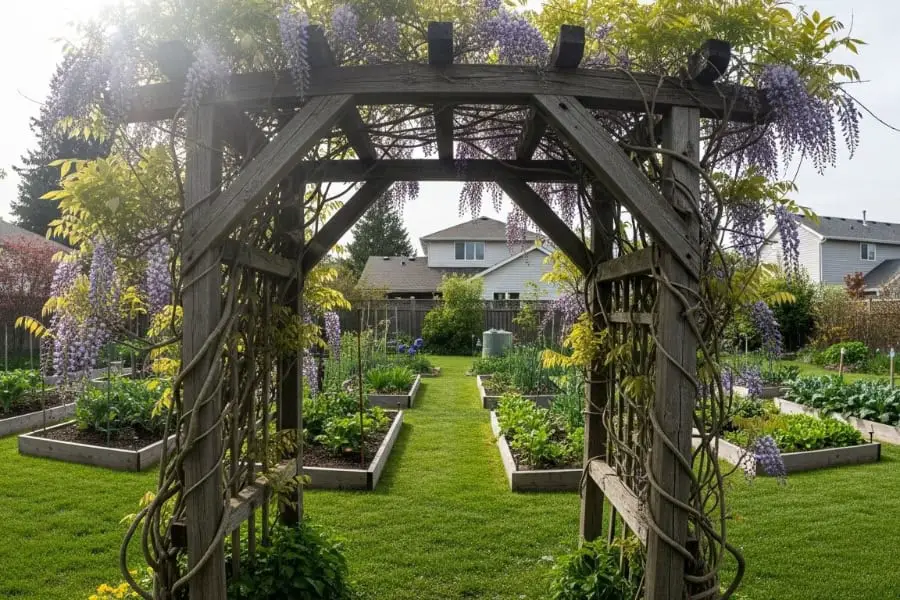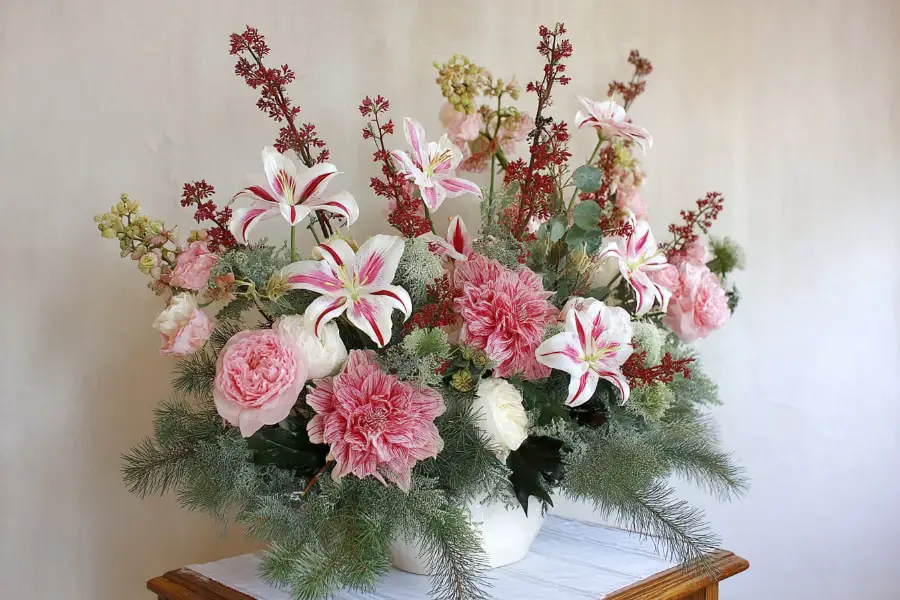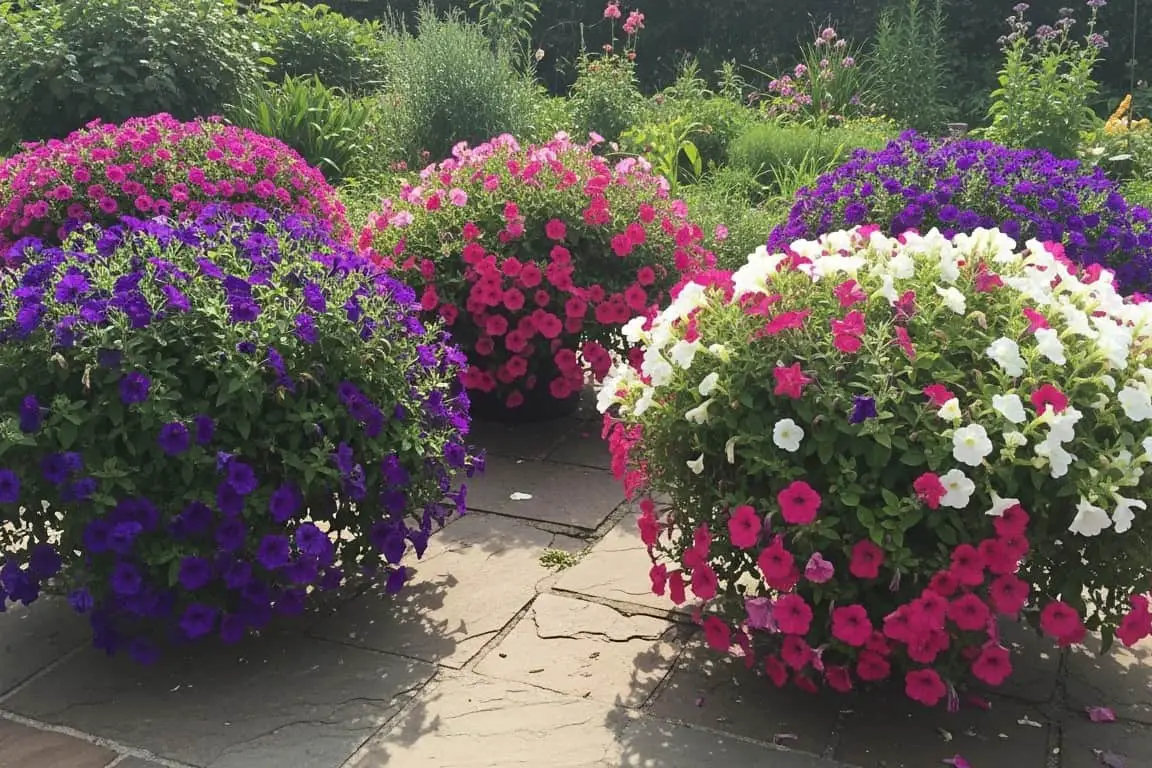Struggling to grow big, beautiful petunias? Consistent watering and proper care are key for massive blooms. This blog will share tips on watering, fertilizing, trimming, and more to help your petunias thrive.
Keep reading for simple secrets that work!
Contents
- 1 Mastering Watering Techniques for Thriving Petunias
- 2 Enhancing Petunia Blooms with Fertilization
- 3 Optimal Care Strategies for Petunias
- 4 My Journey with Gardening Petunias
- 5 Understanding Calibrachoas and Petunias
- 6 Effective Pest Management for Petunias
- 7 Trimming Petunias for Seasonal Rejuvenation
- 8 Selecting the Perfect Petunia Varieties
- 9 Breakthroughs in Petunia Breeding
- 10 Optimizing Sunlight and Soil for Petunias
- 11 Conclusion
- 12 FAQs
Mastering Watering Techniques for Thriving Petunias
Proper watering keeps petunias healthy and blooming. Use simple tricks to ensure they get the right amount every time.

Adhering to a consistent watering schedule
Petunias need regular watering to grow strong and healthy. Water them often, but adjust the timing based on the seasons. In cooler months, they may need less water. During summer or warm days, check more frequently to keep them hydrated.
Deep watering is key for petunias in hanging baskets or garden beds. The soil should stay moist but not too wet. Stick to a schedule that matches your local weather and ensures steady growth for grandiflora petunias or other types you love.
Assessing soil moisture with touch
Sticking to a watering schedule is important, but checking soil moisture helps too. Gardeners can insert their finger into the soil up to the second knuckle. The goal is to feel dampness at that depth.
Dry or overly wet soil means adjustments are needed. This method works well for grandifloras and other varieties. By monitoring with touch, gardeners can avoid overwatering or letting their petunias dry out completely.
Evaluating pot weight for water needs
Checking the soil by touch works well, but pot weight gives another clue. Wet pots feel heavy, while dry ones seem light. This change becomes even clearer as temperatures climb.
Lifting the pot often makes it easy to tell if watering is needed. A quick lift can save overwatering or drying out. For thriving petunias, keep an eye on this “weight test” regularly!
Optimal morning watering routine
Water petunias early in the morning. This helps the plants get ready for the day and keeps roots healthy. Wet soil dries faster with sunlight, stopping root rot in pots.
Soak the soil deeply until water runs out of the drainage holes. Avoid splashing water on leaves to prevent mold and disease. Aim to keep a balance between moist but not soggy soil.
Avoiding the risks of excessive watering
Overwatering can harm petunias. Too much water washes away nutrients and damages roots, leading to weaker plants. Soggy soil often causes root rot, which kills the plant if ignored.
As the growing season slows, reduce watering. Petunias require less moisture in cooler weather. Always ensure the topsoil dries lightly between waterings to keep roots healthy and strong.
Enhancing Petunia Blooms with Fertilization
Fertilization keeps petunias blooming bright and healthy. Apply the right nutrients to help your plants grow strong flowers.

The role of regular fertilization
Regular fertilization keeps petunias healthy and blooming. These plants are heavy feeders, meaning they need nutrients often. Without it, their blooms may shrink or fade over time.
Water-soluble bloom-boosting fertilizers work best for large flowers. Feeding them consistently ensures vibrant colors and strong growth.
Choosing water-soluble bloom-boosting fertilizers
Fertilizing often makes petunias bloom better. Water-soluble “bloom booster” fertilizers are a great choice. Look for products with high phosphorus levels, as this helps flowers grow more.
Phosphorus is shown on labels as the middle number in N-P-K ratios, like 10-20-10 or 15-30-15.
Brands such as Miracle-Gro, Jack’s, Proven Winners, and Beat Your Neighbor offer trusted options. Mix these fertilizers with water before use for even feeding. Use them every one to two weeks during the growing season.
This keeps plants strong and full of blooms without overcomplicating care routines!
Integrating fertilization with watering practices
Mix fertilizer with water every 1–2 weeks. Alternate this routine with plain watering to balance nutrients and hydration.
Avoid over-fertilizing plants that are not petunias. Use a water-soluble, bloom-boosting fertilizer for the best results.
Optimal Care Strategies for Petunias
Caring for petunias takes patience and attention. Small, steady habits keep them healthy and full of blooms.

Emphasizing consistent care
Petunias thrive with consistent care. Regular watering and fertilizing keep them healthy and blooming. A steady routine prevents stress, especially during hot months. Adjust practices based on the season to meet their changing needs.
Healthy petunias also need attention to soil, sunlight, and pests. Check for proper drainage in the soil to avoid soggy roots. Place them where they get at least 6 hours of sun daily.
Keep an eye out for common bugs like aphids or caterpillars that can harm plants.
Next, learn how fertilization can boost vibrant blooms!
Practical tips for meeting plant needs
Check soil with your fingers to know if it needs water. Dry soil means it’s time to hydrate; damp soil can wait. Another trick is lifting the pot. A light pot signals thirst, while a heavy one likely holds enough moisture.
Adjust care as weather changes fast. Hot days may call for more watering, cooler ones less so. Learning these patterns helps plants thrive better daily without overdoing care routines.
My Journey with Gardening Petunias
Growing petunias started as a small hobby but soon became a true passion. Each season brought new lessons, challenges, and beautiful blooms.

Fueling passion through gardening
Caring for petunias can spark a deep love for gardening. Watching colorful blooms grow brings joy and pride. Passion grows stronger with each new plant arrival, like the excitement of working in a greenhouse again.
A gardener’s touch is key to thriving flowers. Simple acts, such as watering or fertilizing, build a lasting connection to plants. This dedication fuels commitment and inspires better care steps ahead, leading into “Commitment to petunia enhancement.
Commitment to petunia enhancement
The author and Stacy worked hard to improve their petunia results at Netas. They focused on finding simple ways to grow stunning petunias without overcomplicating care routines.
Their dedication showed that healthy petunias thrive with basic, steady attention. This approach made achieving vibrant blooms less stressful and more enjoyable for gardeners like them.
Understanding Calibrachoas and Petunias
Calibrachoas look like mini petunias, but they need slightly different care. Learning the key differences can help your garden bloom beautifully.

Exploring the differences
Calibrachoas may look like mini petunias, but they have key differences. They are sensitive to soil pH and need careful attention. Gardeners often plant them in pots or containers to better manage their soil conditions.
Unlike petunias, calibrachoas prefer drying out between waterings. They dislike “wet feet” and thrive when their roots stay dry.
Petunias can handle more watering compared to calibrachoas. While both plants enjoy sunlight, calibrachoas may demand slightly different care for the best results. Their growth habits also vary; calibrachoas spread a bit less than petunias do.
Choosing the right plant depends on how much time and effort a gardener wants to invest in care routines.
Effective Pest Management for Petunias
Pests can damage petunias fast, leaving plants weak and blooms small. Spot issues early to keep your flowers healthy and strong.

Identifying common petunia pests
Earwigs often damage petunias by eating their flowers. These pests are nocturnal, hiding during the day and feeding at night. Look for ragged edges or holes in blooms as signs of their presence.
Aphids can also harm petunias by sucking sap from leaves and stems. They leave behind sticky residue, which attracts ants. Spotting small green, black, or white bugs clustered on plants is a sign of aphid infestation.
Selecting effective pest control productsSluggle Plus and Captain Jack’s Bug and Slug Killer work well against earwigs. Gardeners should place a few pellets on each side of the pot. Check the soil often to see if more pellets are needed.
Always read product labels before use. Make sure it targets earwigs for better results. Using too much can harm plants, so stick to small amounts each time. Regular checks help keep pests away without hurting your petunias.
Trimming Petunias for Seasonal Rejuvenation
Cutting back petunias mid-season keeps them fresh and full of blooms. Regular trims help them stay healthy and vibrant through the summer months.

The necessity of post-July trimming
Petunias need trimming after the Fourth of July for healthy growth. Cutting back about 20% of the plant helps it grow fresh blooms. If stems hang over the pot, trim them a couple of inches above the edge.
This simple step keeps plants looking full and vigorous.
Mid-summer heat often makes petunias leggy or weak. Trimming boosts energy toward growing new flowers instead of struggling with old growth. Healthy stems regrow quickly, producing lush and colorful blooms once again.
For even better results, pair trimming with regular fertilizing to enhance vibrant blossoms.
Selecting the Perfect Petunia Varieties
Choose vibrant petunias that suit your garden’s style and sunlight needs—each variety offers something unique!

Comparing old and new petunia varieties
Old petunia varieties often bloom, set seeds, and fade by mid-season. Gardeners need to deadhead these plants to keep them flowering longer. This process takes time and effort, which many find frustrating.
New petunias do not rely on making seeds for blooms. They grow from cuttings for uniform growth and flower nonstop without extra labor. These varieties have strong blooms, dense coverage, and cost more but deliver better results in any garden.
Breakthroughs in Petunia Breeding
Breeders have created petunias with stronger colors and longer bloom times. New varieties also grow better in tough weather, making them easier to care for.

Traits of newly bred varieties
New petunia varieties now have tougher petals. These petals stand firm under rain without tearing or wilting. Gardeners no longer need to worry about blooms being ruined by storms.
Self-cleaning is another exciting feature. Spent flowers fall off with just a touch or a light breeze. This keeps plants looking neat and fresh, reducing the effort needed for maintenance.
Benefits of advanced breeding techniques
These breeding methods create petunias that bloom for longer periods. Many new varieties produce flowers continuously, even as other annuals fade late in the season. This extended flowering makes them a favorite for gardeners seeking vibrant colors throughout summer.
Improved breeds are also more resilient to pests and diseases. They handle weather changes better too, thriving in various conditions. These hardier plants save time and effort while still delivering stunning results for any garden or patio space.
Optimizing Sunlight and Soil for Petunias
Petunias thrive in bright sunlight and well-drained soil. Proper placement and care give them the boost they need to flourish.

Balancing sunlight exposure and soil moisture
Petunias thrive with at least six hours of direct sunlight each day. Too little sunlight can lead to fewer blooms and weaker plants. Place petunias in a spot that gets bright, morning light.
This helps them grow strong and healthy.
Soil must stay moist but not soggy. Check the top inch with your finger; it should feel damp, not dry or muddy. Use pots with drainage holes to avoid water pooling, which causes root problems like rot.
Keep watering steady for lush growth without overdoing it!
Conclusion
Growing massive petunias takes care and attention. Watering on time, feeding them right, and giving enough sunlight make a big difference. Trimming keeps them healthy and blooming longer.
Choosing the best varieties adds to the success. With these steps, anyone can enjoy lush, colorful petunias all season long!
FAQs
1. How do I grow massive petunias?
To grow large petunias, start with healthy seeds or plants. Use rich soil, water regularly, and give them plenty of sunlight. Fertilize often to keep them thriving.
2. What type of soil works best for petunias?
Petunias need well-drained soil that is rich in nutrients. A mix with compost or organic matter helps them grow strong.
3. How often should I water my petunias?
Water your petunias deeply about once a week, but check the soil first. If it feels dry, they may need more frequent watering.
4. Can fertilizer help my petunias get bigger?
Yes, use a balanced fertilizer every two weeks during their growing season to promote larger blooms and healthier plants.





